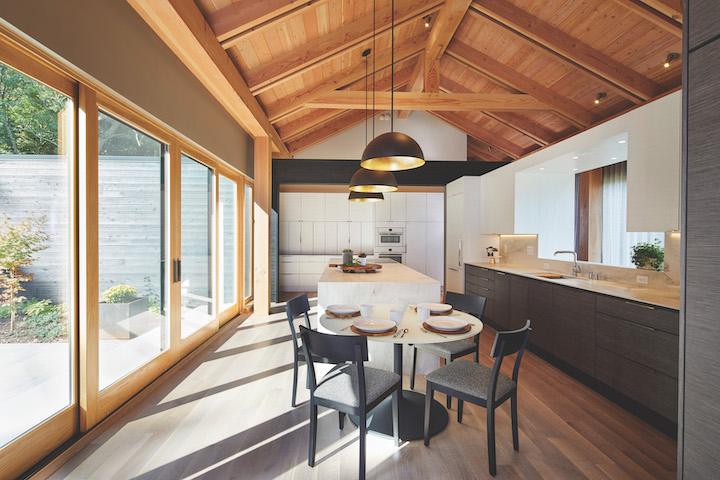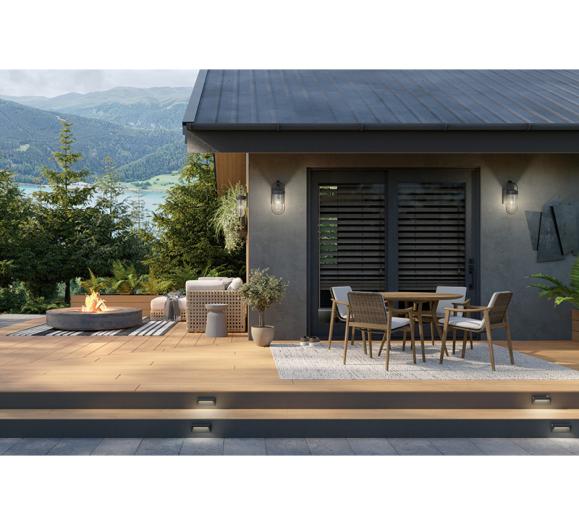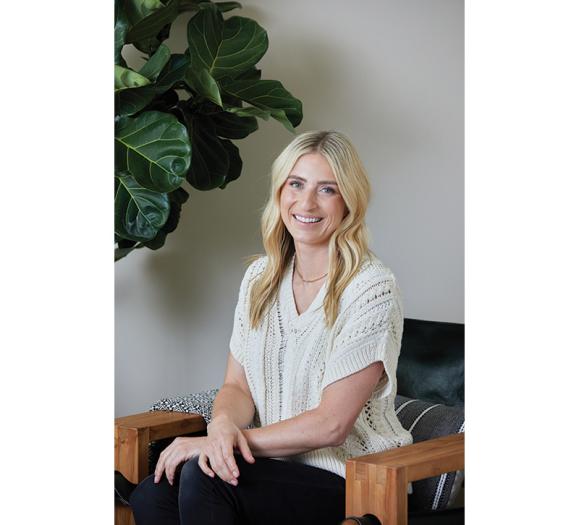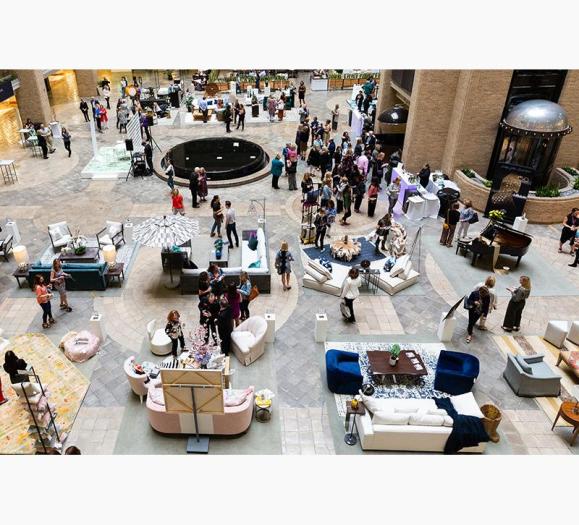When Sheree Vincent began her interior design career in the early ‘90s, sustainability wasn’t much of a hot topic. Growing up in Minnesota surrounded by nature, she had always had a personal relationship with the outdoors. But it wasn’t until her Minnesota chapter of the American Society of Interior Designers (ASID) developed a green committee that the wheels started turning in her mind as she began to realize the impact designers could have on the outdoor and built environment.
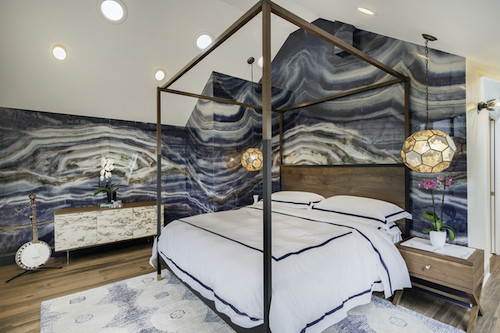
“My ears perked up,” she says. “I was like, ‘OK, whoa, what is this about?’ I became a member of that committee and that was really my first introduction into ‘what are we putting into people’s homes’? What is it really made of?”
She credits that ASID committee, which she went on to chair, as the genesis of her career in sustainable interior design. Now, as the Principal Designer of Fusion Designed in Forest Lake, MN, and adjunct faculty member in Century College’s interior design department, Vincent designs residential and commercial spaces that prioritize her clients’ well-being.
For designers like Vincent, sustainable interior design boils down to creating spaces that are both good for the health of the client and the planet. As awareness continues to grow around the impacts of climate change and the health effects of products in the home, designers can play a key role in helping consumers navigate green interior design.
Easy Green Interior Design
For Kari Whitman, CEO of Kari Whitman Interiors based in Boulder, CO, and Los Angeles, designing with the environment in mind has always been a no-brainer. A self-described tree-hugger who grew up in Boulder, Whitman’s design philosophy revolves around giving back to the planet that inspires her work. She works on everything from tiny homes to hotels and regularly designs for celebrity clients including Jessica Alba, Emilio Estevez and Kristen Bell.
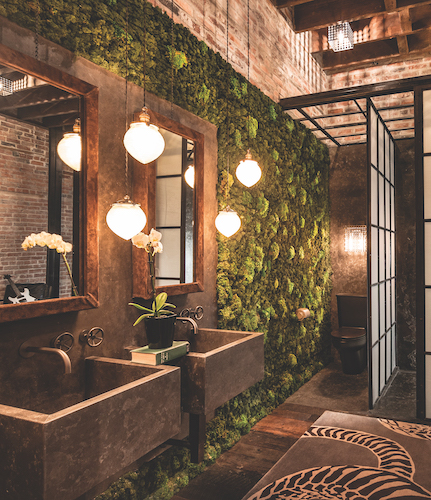
Early in her design career, she was struck by the amount of waste in building and design projects and has made it a priority to recycle and reuse as much as possible while seeking any new products from ethical companies. She regularly thrifts, shops from antique auctions, repurposes items her clients already have, and shops architectural salvage for items that are one of a kind and durable.
Whitman says to her, sustainability is a bit of a general word that gets thrown around and doesn’t always encompass all of what it means to be a good steward of the environment. For her, green interior design starts with using as little newly created product as possible.
“The number one thing I say is: to recycle is to reuse, and the best way to help the earth is to use what’s already there,” she says. “Why not take that old couch of yours that you hate, cut it down, change the legs, drop the arms, heighten the back — whatever it is — and use that couch because what you have is probably made with better wood than what you could go and buy brand new.
“I can’t believe the stuff you can find at the Rose Bowl. I can’t believe the stuff you can find at auctions. I can’t believe the stuff you can find on Craigslist. You just have to find a good fabricator or upholsterer. Yes, it’s a little more work. Is it worth it? Absolutely. It lasts longer, it doesn’t hurt the environment, and you feel good at the end of the day.”
As sustainability has become more of a buzzword, both Whitman and Vincent caution against greenwashing, or false claims of environmental responsibility. Whitman says designers should be vigilant and do their research about vendors’ practices rather than believing broad claims or a green-colored logo.
“You have to really look at, did the process to create this impact the Earth worse or is it really making it better?” Whitman says.
Sustainable Sourcing for Interior Design Needs
Vincent, who is certified Green AP by the Sustainable Furnishings Council (SFC), says it’s important to be clear about what eco-friendly really means before approaching the sourcing process.
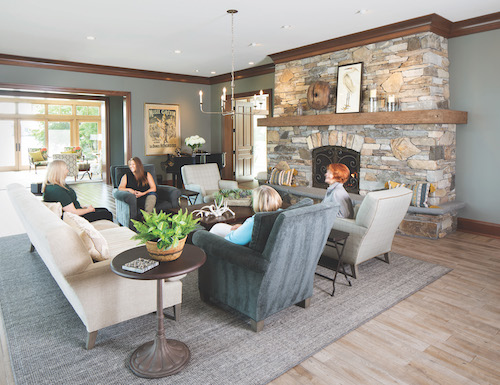
While she says there’s no such thing as a totally green product, there are products with green attributes. Some key ones she looks for include: durability (so products don’t end up in a landfill in five years), low volatile organic compounds, soy-based rather than petroleum-based cushions, use of recycled materials, Forest Stewardship Council-certified wood from managed forests, use of natural materials like wool and linen and organic cotton, formaldehyde-free glues and finishes, and LED lighting.
She seeks out products that are made in the United States to reduce the high embodied cost and environmental impact of shipping products from overseas, in addition to researching the corporate culture of vendors.
“The other part of it that people don’t think about until they’re made aware of it is what is the corporate culture of the manufacturers that are making the products? Are they just whipping these products out and not giving any care to the byproducts and how they’re made and what kind of circumstances their employees are in?”
To help parse through all of the vendors out there, Vincent’s top sourcing resource is the SFC’s list of vetted manufacturers, available on their site. She’s also developed relationships with go-to companies she trusts including Lee Industries, Kravet, Century Furniture, Four Hands and Canal Dover. She looks to certifications, noting that third-party is always the best since certifiers aren’t beholden to any industry or particular manufacturer.
Whitman uses non-profit Global Green as a sourcing resource, and has a list of go-to manufacturers like Paper Stone, a company that makes countertops out of recycled paper, or Bonded Logic, a company that makes eco-friendly insulation from recycled denim. She also often shops secondhand from sources like 1stdibs and Chairish.
Ultimately, Vincent says doing your research and putting your money toward ethical products is a great step toward progress.
“You have the power of the purse. You walk into these showrooms with your client’s money in your pocket, and when you walk in and go, ‘Hey, what do you have that’s sustainable?’ and they look at you like you’re speaking a third language or they try and sell you something that isn’t, and you walk out with that client’s money, how many times is that going to happen before it makes an impact? And it has made an impact — I have seen the changes.”
Seeing the Forest for the Trees
For designers like Vincent and Whitman, educating clients on the benefits of green products and sustainable interior design becomes a regular part of the job. While both said clients often come to them because they’ve made a name for themselves as green designers, Vincent noted that clients’ desire to be eco-friendly doesn’t necessarily mean they know what that actually means in practice.
In the event that a client really wants to use a specific product that isn’t particularly eco-friendly, she explains the issues with that product and presents them with other similar options that align with the cost and style. When presented with the information to make an informed decision, Vincent says clients will usually go with the greener option.
“When presented with their own individual health and the health of their children and their family, they get it,” she says.
In the case where a client is wary of the price of a more sustainable choice and there isn’t a less expensive alternative, Whitman will take the bullet and pay the extra cost herself. She also makes sure to explain that just because she’s repurposing something that could have been thrown in the trash, doesn’t mean it doesn’t have value and won’t look amazing once it’s finished. Most of the time, Whitman’s clients are cool with her doing her thing, even if they don’t quite get it.
At the end of the day, Vincent hopes to see the day that “sustainable design” isn’t seen as a specialty area, but rather the norm. Every semester, she tells the students in her sustainable design course that she doesn’t want to ever have to teach that class again.
“This is how we should be designing,” she says. “It shouldn’t be an option. As interior designers, our mantra is health, safety and welfare, and we have to start really promoting that.” FLD



